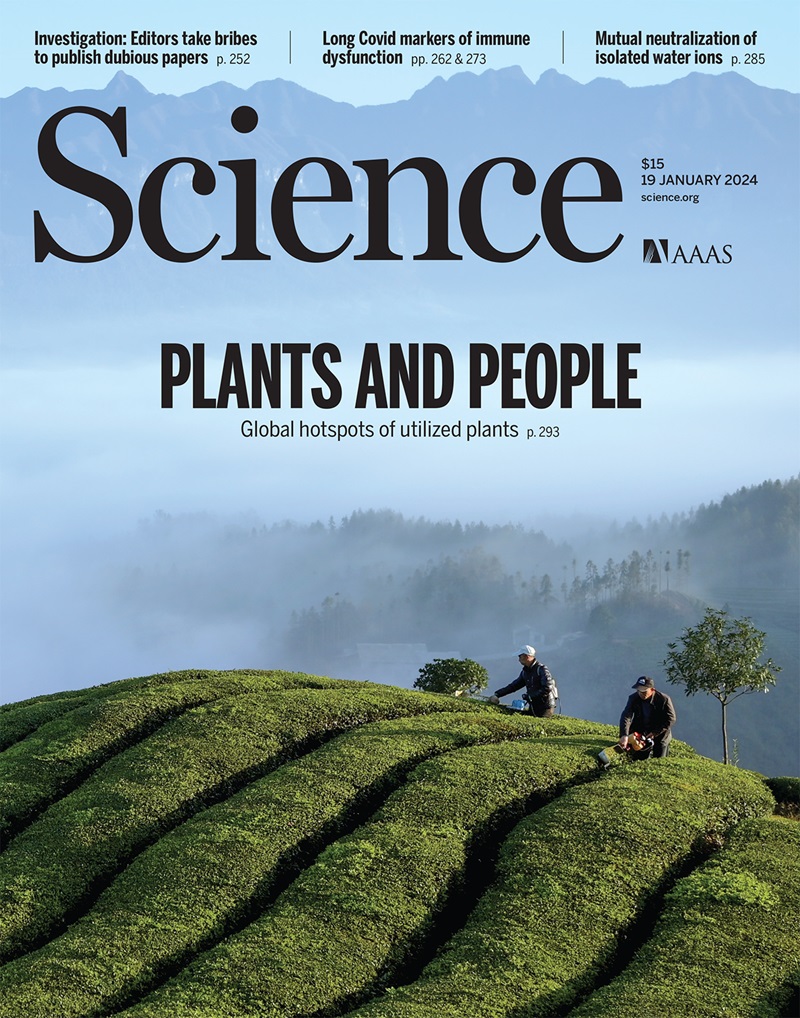Hepatic glycogenesis antagonizes lipogenesis by blocking S1P via UDPG
IF 44.7
1区 综合性期刊
Q1 MULTIDISCIPLINARY SCIENCES
引用次数: 0
Abstract
The identification of mechanisms to store glucose carbon in the form of glycogen rather than fat in hepatocytes has important implications for the prevention of nonalcoholic fatty liver disease (NAFLD) and other chronic metabolic diseases. In this work, we show that glycogenesis uses its intermediate metabolite uridine diphosphate glucose (UDPG) to antagonize lipogenesis, thus steering both mouse and human hepatocytes toward storing glucose carbon as glycogen. The underlying mechanism involves transport of UDPG to the Golgi apparatus, where it binds to site-1 protease (S1P) and inhibits S1P-mediated cleavage of sterol regulatory element–binding proteins (SREBPs), thereby inhibiting lipogenesis in hepatocytes. Consistent with this mechanism, UDPG administration is effective at treating NAFLD in a mouse model and human organoids. These findings indicate a potential opportunity to ameliorate disordered fat metabolism in the liver.
肝糖生成通过 UDPG 阻断 S1P,从而拮抗脂肪生成。
确定肝细胞中以糖原而非脂肪形式储存葡萄糖碳的机制,对于预防非酒精性脂肪肝(NAFLD)和其他慢性代谢性疾病具有重要意义。在这项研究中,我们发现糖生成利用其中间代谢产物二磷酸尿苷葡萄糖(UDPG)来拮抗脂肪生成,从而引导小鼠和人类肝细胞将葡萄糖碳储存为糖原。其基本机制包括将 UDPG 运送到高尔基体,在那里它与位点-1 蛋白酶(S1P)结合,抑制 S1P 介导的固醇调节元件结合蛋白(SREBPs)的裂解,从而抑制肝细胞的脂肪生成。与这一机制相一致的是,服用 UDPG 能有效治疗小鼠模型和人体器官组织中的非酒精性脂肪肝。这些发现为改善肝脏中紊乱的脂肪代谢提供了潜在的机会。
本文章由计算机程序翻译,如有差异,请以英文原文为准。
求助全文
约1分钟内获得全文
求助全文
来源期刊

Science
综合性期刊-综合性期刊
CiteScore
61.10
自引率
0.90%
发文量
0
审稿时长
2.1 months
期刊介绍:
Science is a leading outlet for scientific news, commentary, and cutting-edge research. Through its print and online incarnations, Science reaches an estimated worldwide readership of more than one million. Science’s authorship is global too, and its articles consistently rank among the world's most cited research.
Science serves as a forum for discussion of important issues related to the advancement of science by publishing material on which a consensus has been reached as well as including the presentation of minority or conflicting points of view. Accordingly, all articles published in Science—including editorials, news and comment, and book reviews—are signed and reflect the individual views of the authors and not official points of view adopted by AAAS or the institutions with which the authors are affiliated.
Science seeks to publish those papers that are most influential in their fields or across fields and that will significantly advance scientific understanding. Selected papers should present novel and broadly important data, syntheses, or concepts. They should merit recognition by the wider scientific community and general public provided by publication in Science, beyond that provided by specialty journals. Science welcomes submissions from all fields of science and from any source. The editors are committed to the prompt evaluation and publication of submitted papers while upholding high standards that support reproducibility of published research. Science is published weekly; selected papers are published online ahead of print.
 求助内容:
求助内容: 应助结果提醒方式:
应助结果提醒方式:


